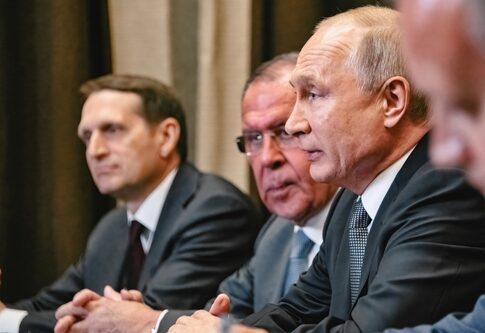Donald Trump has proposed an unprecedented peacekeeping strategy in the ongoing Russia-Ukraine conflict: having the United States take ownership and operation of Ukraine’s nuclear power plants. The nuclear plant proposal represents a dramatic shift in American foreign policy approach that could either herald innovative conflict resolution or trigger new geopolitical tensions. How might NATO allies respond to Trump’s bilateral approach to resolving the conflict?
Trump’s Bold Nuclear Proposal
Donald Trump has proposed that the United States take ownership and operation of Ukraine’s nuclear power plants as a key component of a potential ceasefire in the ongoing Russia-Ukraine conflict. This unprecedented suggestion came during a recent telephone conversation with Ukrainian President Volodymyr Zelenskyy, which the White House later described as “fantastic.”
The proposal specifically addressed the Zaporizhzhia nuclear power plant, which has been under Russian occupation since the early days of the conflict. According to Zelenskyy, “We talked only about one power plant, which is under Russian occupation,” clarifying that the discussion did not extend to Ukraine’s other nuclear facilities.
'American ownership of those plants would be the best protection' — White House
President Trump apparently suggested that Ukraine should hand over all of its energy infrastructure to the US for 'protection'
That's what they call The Art of the Deal https://t.co/PJejcCZSQA pic.twitter.com/D4j5nob6rt
— RT (@RT_com) March 19, 2025
Diplomatic Progress Amid Continuing Challenges
Following the call with Trump, Zelenskyy expressed willingness to pause Ukrainian attacks on Russia’s energy network, signaling a potential breakthrough in de-escalation efforts. This concession comes as Trump’s national security team, including advisor Mike Waltz and Secretary of State Marco Rubio, asserted that “American ownership of those plants would be the best protection for that infrastructure.”
Despite these promising developments, a comprehensive ceasefire remains elusive with Russian President Vladimir Putin maintaining firm conditions. Putin continues to demand that Western nations halt military aid to Ukraine and that Ukraine commit to not re-arming, requirements that Kyiv and its allies have found difficult to accept.
I won’t discuss power plants ownership, they belong to the people of Ukraine — Zelensky in response to Trump's proposal to take control of the stations as part of a ceasefire deal
Funny coming from the guy who’s dragging 18-year-olds to the frontlines pic.twitter.com/9vba6O9X2e
— RT (@RT_com) March 21, 2025
International Reactions and Parallel Initiatives
While Trump pursues his nuclear plant initiative, other NATO allies are considering more direct approaches to the conflict. UK Prime Minister Keir Starmer and France’s President Emmanuel Macron have signaled openness to potentially deploying troops in Ukraine, representing a stark contrast to Trump’s focus on negotiated solutions.
Public opinion remains sharply divided, with skepticism prevalent in Ukraine and more optimistic views in Moscow regarding potential outcomes. A Kyiv resident, Lev Sholoudko, expressed the Ukrainian sentiment bluntly: “I don’t believe Putin at all, not a single word. He only understands force.”
As a sign of potential progress, Russia and Ukraine recently exchanged 372 prisoners following the Trump-Putin call. This goodwill gesture suggests some diplomatic channels remain functional despite the ongoing hostilities and conflicting narratives between Moscow and Washington regarding the content and outcomes of recent high-level discussions.
Zelenskyy mentioned that further talks between Ukrainian and US officials may take place in Saudi Arabia, indicating continued diplomatic efforts. Trump has also pledged to help Ukraine acquire additional air defense equipment and address the humanitarian issue of Ukrainian children taken by Russia, demonstrating a multi-faceted approach to the complex conflict beyond the nuclear plant proposal.


